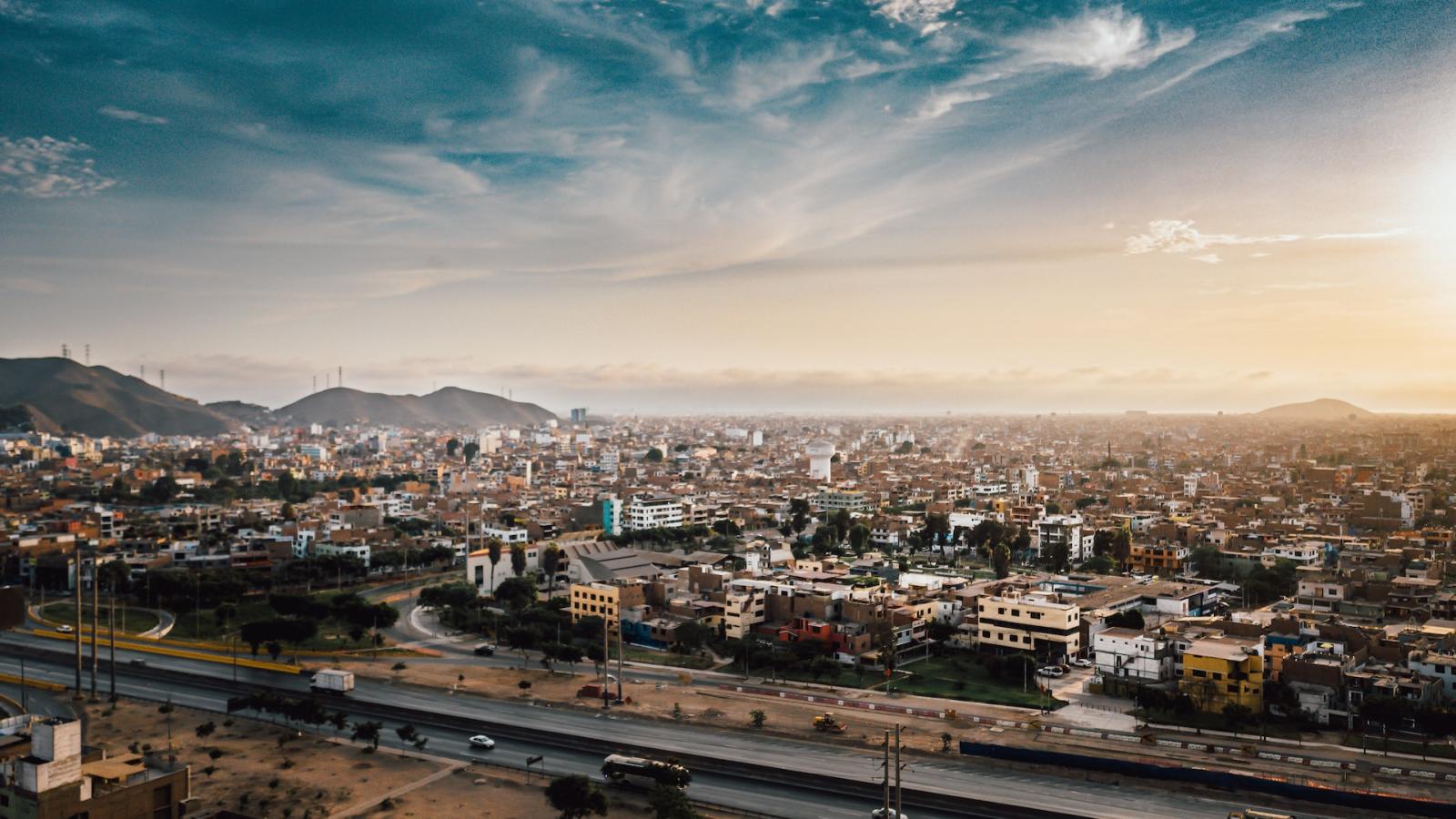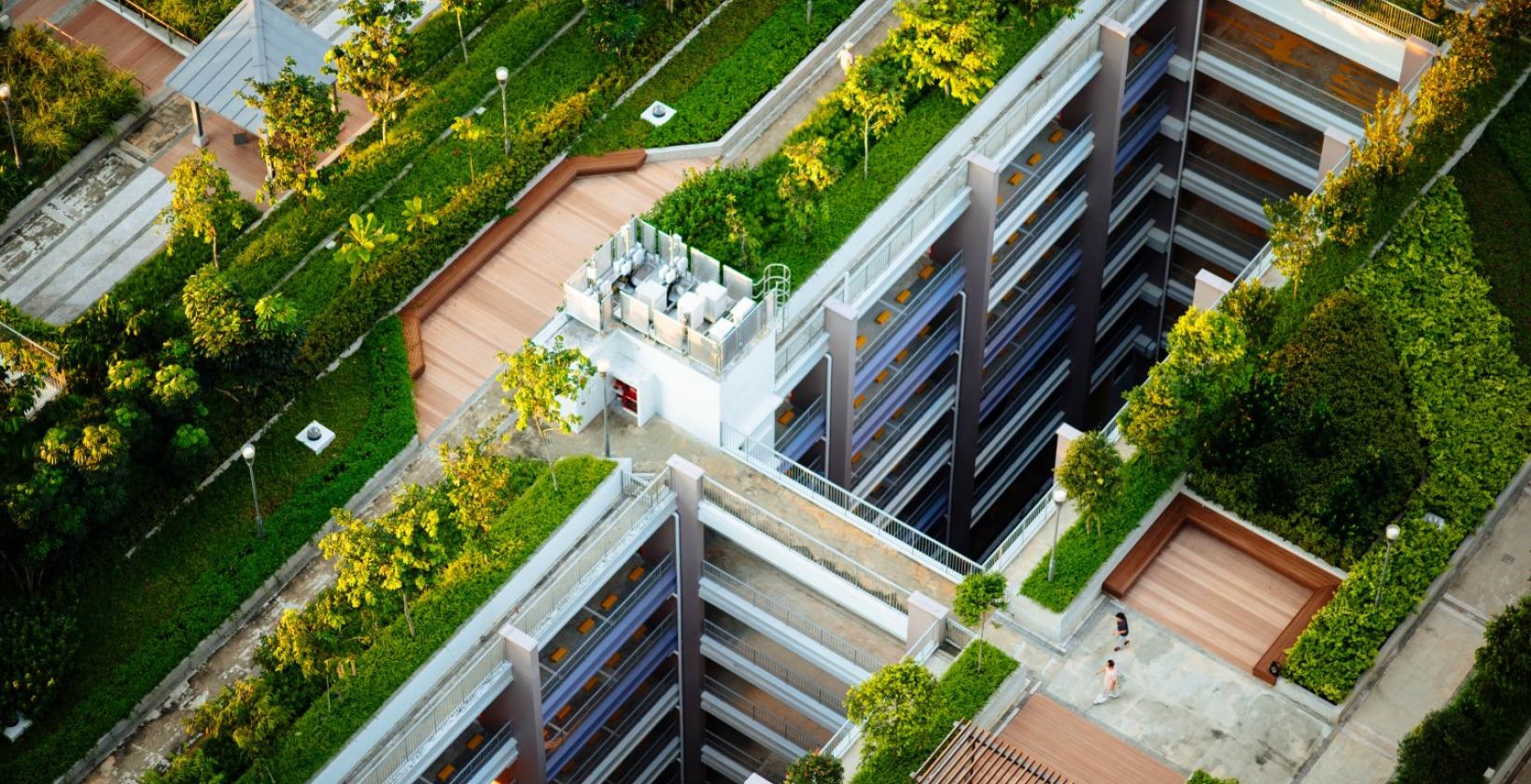City Spotlight
Lima’s Participatory, Low-Cost Expansion of Public Green Space
Lima, a GEF 6 city, has found success with a tactical-urbanism approach to creating more vibrant public spaces. Here are key takeaways from its ongoing efforts to improve quality of life for residents.
Creators / Unsplash
This article originally appeared on C40 Cities' Knowledge Hub.
The Limeños al Bicentenario urban regeneration programme is transforming Lima’s derelict, unused and under-used public spaces. Launched in December 2019 by Mayor Jorge Muñoz Wells, its goal is to provide communities with accessible green infrastructure and a better environment for leisure, recreation, walking and cycling, as well as to reduce risk from heat and flooding. The programme is linked to the delivery of green public-space objectives in Lima’s climate action plan and is a leading example of street and public space upgrades in Latin America. It emphasises access and proximity, in line with ‘complete neighbourhood’ or ’15-minute city’ principles, and prioritises early childhood needs. It is being delivered with limited resources in the wake of the COVID-19 global health crisis.
The programme uses highly participatory ‘tactical urbanism’ approaches to recover and upgrade spaces in priority areas, in collaboration with civil-society and private-sector partners. At the time of writing, 17 public spaces totalling over 41,000 m2 have been improved at low cost, including abandoned plots and community areas, quiet roads and car-parking spaces. Pedestrians have gained a further 12,000 m2 of street space, and 430 trees have been planted. Ultimately, Lima has plans for more than 50 sites around the city and intends to institutionalise the programme to support the recovery of public spaces at scale. Here, the City of Lima shares details of how it is delivering these projects and gives its advice to others.
Lima’s advice to other cities
Establish clear targets for green spaces
Lima’s climate action plan sets out goals to increase urban green areas, ensure they are safe and inclusive and promote their active use. The plan established a minimum requirement for green areas at district level and in new developments, with a target of 9m2 per inhabitant and one tree for every three inhabitants. Lima aims to plant 4 million trees by 2030. By 2050, all main metropolitan roads and other spaces with high usage by cyclists and pedestrians should be green corridors. These targets are helping to drive implementation.
The plan also promotes the use of local vegetation with low water requirements and aims to provide shaded spaces for different age groups, prioritising children and the elderly. Find Lima’s action plan on our map – these policies are on pages 163 and 164.
Seek out city officials with different perspectives who are open to innovation
Working with a wide range of city agencies and looking for officials in those agencies with new, ‘outside-the-box’ ideas for the regeneration of plots and street space has enabled better design and delivery. The programme uses a points-based framework to prioritise which spaces should be upgraded (see below) and is working with a multidisciplinary team including representatives from departments for social services, education, health, environmental management, sports and culture, urban mobility, economic development, security and more. Each department has put forward proposals linked to their particular competencies, which are then integrated to ensure each public space can offer the greatest value to the local community. For example, one project included the creation of a community centre offering health services in a neighbourhood that was previously underserved. Some have run workshops to support urban agriculture, while others are hosting events and activities. Defining the scope and timeline for these inputs and the role of each actor has proven critical.
Lima’s approach to prioritising public spaces
To maximise the positive impact on people’s quality of life and ensure equity for groups and neighbourhoods across the city, Lima awards points for the following criteria to determine which spaces should prioritised for regeneration:
- Vulnerability: High physical and/or social vulnerability. Physical vulnerability considers the deficit of vegetation and green space, the state of deterioration and the potential for inappropriate uses of the space. Social vulnerability considers levels of insecurity, violence and vulnerable populations.
- Comfort: Public spaces that lack adequate access and facilities for safe crossing or walking, facilities for young children and other vulnerable groups, urban furniture for shelter, recreation and rest, and green infrastructure and other features that protect people from heat, noise and pollution.
- Citizen participation: The presence of community leaders and neighbours willing to participate and support the development and maintenance of their local project.
- Tactical urbanism opportunities: Spaces where testing solutions and taking small risks that offer bigger economic, environmental and social rewards can make a difference.
- Potential as catalyst: Spaces with high potential to promote social cohesion, local economic development, improved welfare and to bring ecosystem services and essential services to the community.
- Spaces of confluence: Public spaces in which people and uses converge – such as connecting points, landmarks, high-traffic areas or those with symbolic significance.
Build trust with residents and enable their participation in the delivery and maintenance of green spaces
Local people’s involvement in the planning process and their long-term ownership and management of such projects are critical to their success, especially given the city’s budget limitations. Lima has invited participation at four stages:
- Diagnosis: identifying the needs of different user groups and understanding community dynamics.
- Design: identifying solutions that meet those needs and address local problems.
- Implementation: neighbours and volunteers are involved in re-landscaping and planting the spaces, as well as in creating the street furniture and colourful artwork.
- Sustainability: through training, the community takes on responsibility for the maintenance of their green space and infrastructure.
To date, 320 people have participated in the diagnostic and design phases, 830 people have been involved in project implementation and 210 are actively supporting long-term maintenance.
To build the trust needed to secure residents’ ownership of these projects and spaces, Lima has collaborated with neighbourhood leaders to develop a dialogue with communities and motivate people to engage with projects on each site. The relationship with residents is managed by Lima’s Neighbourhood Participation Management department, which has led several rounds of consultation and provides support to enable people to contribute to proposals. The city has also brought experts to community engagement activities, who can provide information and demonstrate how similar tactical urbanism projects have delivered benefits in other cities.
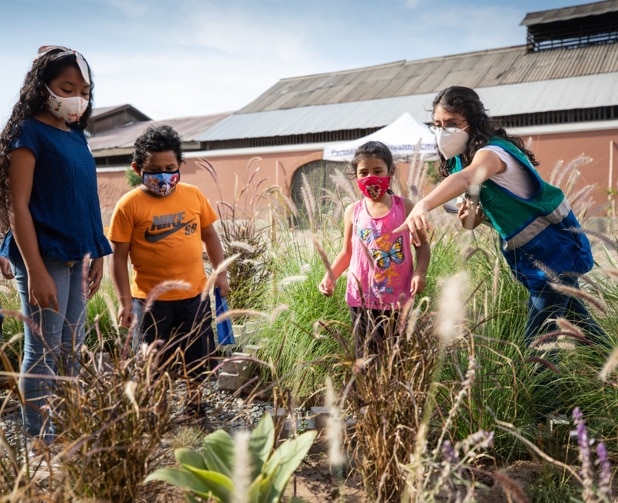
Use ‘tactical urbanism’ and build alliances to keep costs low
To support the Limeños al Bicentenario project, Lima established alliances with private and civil-society partners to channel donations of new, used and recycled materials, such as tyres, pallets and bricks, to build street furniture, play equipment and planters in the regenerated public spaces. Coupled with tactical urbanism and the close involvement of local people in delivering the projects, this has helped Lima to implement actions quickly and cheaply.
Capitalise on a ‘moment’ to build support for the programme
Lima used the city’s wider celebrations of Peru’s 200 years of independence in July 2021 to launch and anchor the programme, which has helped to mobilise support and promote citywide interventions.
Stories from three Limeños al Bicentenario sites
- Recovered parking spaces in the Monserrate neighbourhood: Together with volunteers, Lima has pedestrianised nearly 1,400m2 of road space previously used for car parking. The project has planted trees and vegetation to make the space more attractive for pedestrians and recreational activities. It has also implemented a level crossing and ramps to ensure children and people with reduced mobility can access the area in strollers and wheelchairs. It now hosts a food fair and other facilities that are helping to attract visitors to the area, boosting the local economy. The project is informing proposals for the Master Plan for the Recovery of the Historical Centre of Lima.
“The public space was being misused. Before the intervention, the pedestrian platform that is now a garden used to be a garage. The street was a public toilet. I am very grateful to the mayor because he has done what I have never seen in 52 years of my life.” -- Zaida Herrera, born, raised and resident in Monserrate.
- Making the historical centre more walkable: The permanent pedestrianisation of a portion of the Jirón Camaná highway in the historical centre of Lima has created space for waiting, walking and cycling. The project also installed bicycle parking facilities, ramps, trees and other vegetation, benches and speed bumps to reduce the speed of through traffic.

- Recovering Teniente Paiva to create a pedestrian passage: Teniente Pavia’s passage and public spaces were used for many years as a public garage. This project levelled the ground, fixed sidewalks, planted vegetation (including new vegetable gardens) and installed infrastructure for play, rest and exercise. It creates space for pedestrians, ensures access for people in wheelchairs, toddlers and caregivers, and encourages intergenerational use. It regenerated the area to promote walking for journeys that would have previously been made by car, provide public space for local residents and children and to preserve the history of the place.

Lima’s monitoring shows that Limeños al Bicentenario is working
Lima is using quantitative and qualitative indicators to measure changes to the physical environment, and impacts on people’s behaviour and perceived well-being.
Monitoring before and after project implementation has shown, among other things:
- A 285% increase in the number of people using these spaces – with a 561% increase in use by women and 1,820% increase in use by children aged five years and under.
- A 2,100% increase in people doing physical activity.
- A 700% increase in people carrying out commercial buying or selling activities.
- 74% and 77% increases in the perception of security and well-being, respectively.
- A 50% increase in the perception of community belonging.
Overall, 86,000 residents are believed to have benefited.
You can hear about Limeños al Bicentenario from decision-makers and staff involved its delivery in the webinar below or in Reclaiming green space in Lima: In a crowded city, natural spaces bring people together and protect against climate change.
READ MORE
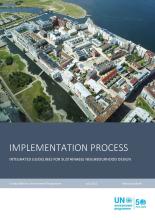
Integrated Guidelines for Sustainable Neighbourhood Design
This online resource provides a roadmap for city leaders to respond to urban growth by planning at the neighborhood level.
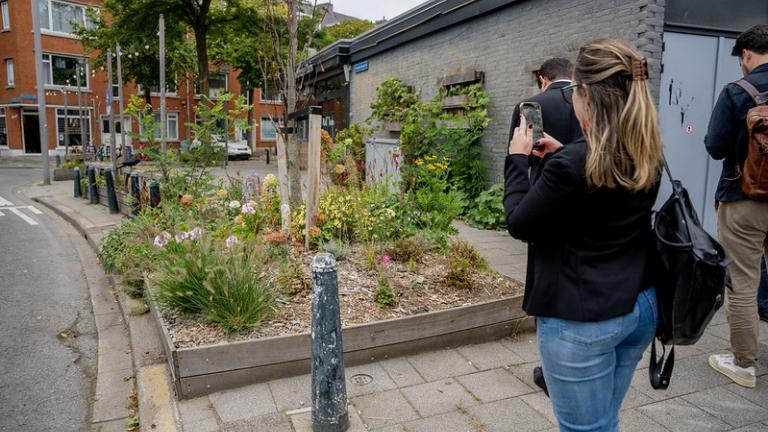
Building Resilience from the Community Up: Lessons from Rotterdam's People-Centered Climate Action Strategies
Over a week in Rotterdam, representatives from Latin American cities dove into the city's thoughtful approach to human-centered climate resilience in an UrbanShift-led Peer-to-Peer Exchange.
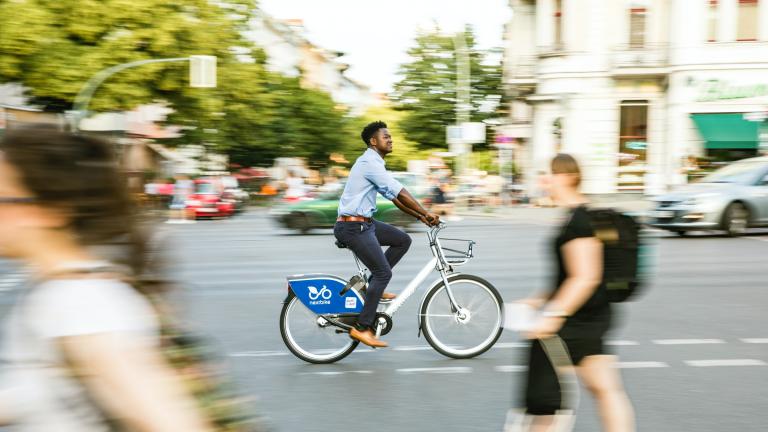
What does a green city look like?: Equitable, connected, and nature-positive
During the ClientEarth Summit, UrbanShift's John-Rob Pool joined Aditya Bahadur of the International Institute for Environment and Development and Caroline Watson of C40 Cities for a discussion on creating more sustainable, livable cities.
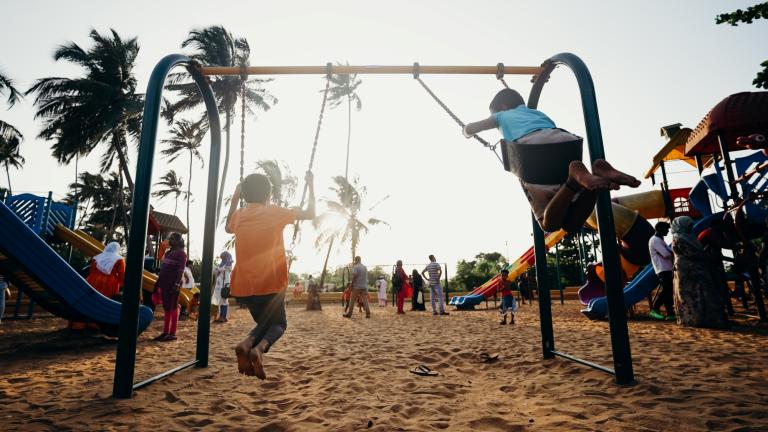
UrbanShift Workshop at Ecocity World Summit: Greener, Healthier, Vibrant Neighbourhoods
This session offered an overview of implementing sustainable neighbourhood design, and overcoming challenges cities face in creating more livable communities.
